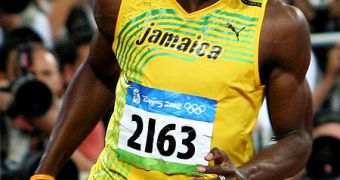Biologists and anthropologists have argued for a long time that, past a certain speed level, the amount of force that is used to push against the ground becomes less important, and the emphasis shifts on the muscles. It is believed that, in order to achieve the maximum theoretical speed possible for a human being, 40 miles per hours, muscular fibers need to have the ability to contract repeatedly, so as to produce the required push. The human body, many have said, cannot exceed this speed limit, as it is not constructed to do so, Wired reports.
“If you just find a way to rev up those contractile fibers for the muscle, then everything else from human biology and gait would allow us to be that fast,” Peter Weyand, who holds an appointment as a physiologist at the Southern Methodist University, explains. He is also the lead author of a new paper detailing this idea, which appears in the January 21 issue of the respected scientific Journal of Applied Physiology. Usain Bolt, a Jamaican sprinter, is, at this point, the fastest known man on the planet, yet he is unable to keep up with a horse, or even a kangaroo. His top speed is of 27.5 miles per hour, whereas the marsupial can move at 35 miles per hour.
“The current best guess as to why we can’t run any faster is it’s something to do with the maximum force that our legs can impose or experience,” Royal Veterinary College of London zoologist Jim Usherwood adds. Two of the main traits that athletes have developed better than regular folks are represented by the ability to push harder into the ground upon touching it, and also being able to do so a lot faster than usually possible. In a series of investigations, it was determined that force was not the thing limiting human speed. Rather, the researchers found that the contact time played the most important role in doing that.
The contact time is a very important function. Elite athletes exhibit spectacular deformations of their spinal cords as they run. When this happens, their bodies basically allow for them to build up force in their legs for the next push, while at the same time maintaining a forward momentum. “When their forelimbs hit the ground, their whole spine just bends like crazy,” Weyand adds. However, Usherwood considered this research to be a game of “what if?” He says that, if muscles were to grow and become more efficient at contractions, then surely other limitations would kick in, such as how fast we can swing our feet past each other.

 14 DAY TRIAL //
14 DAY TRIAL //